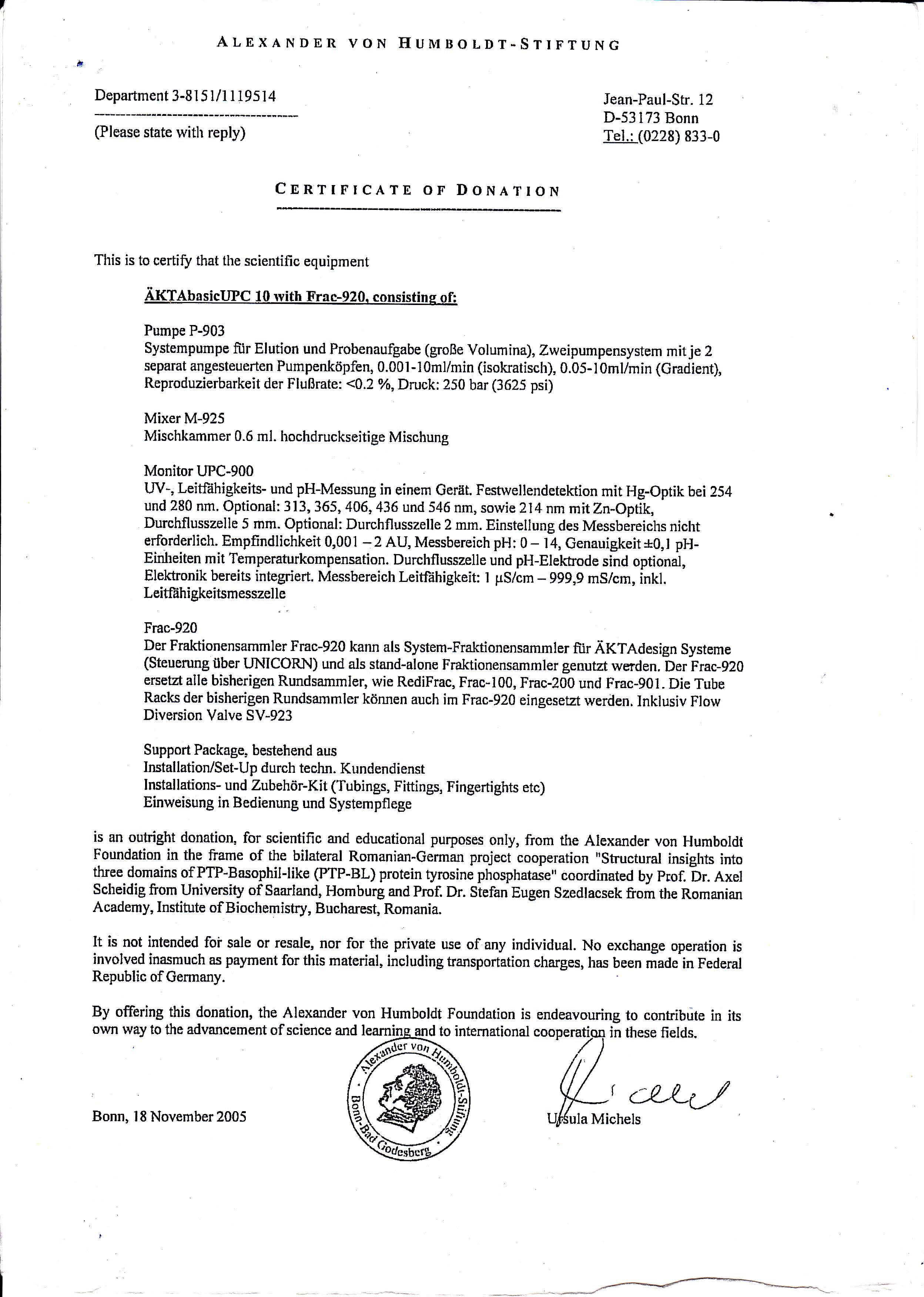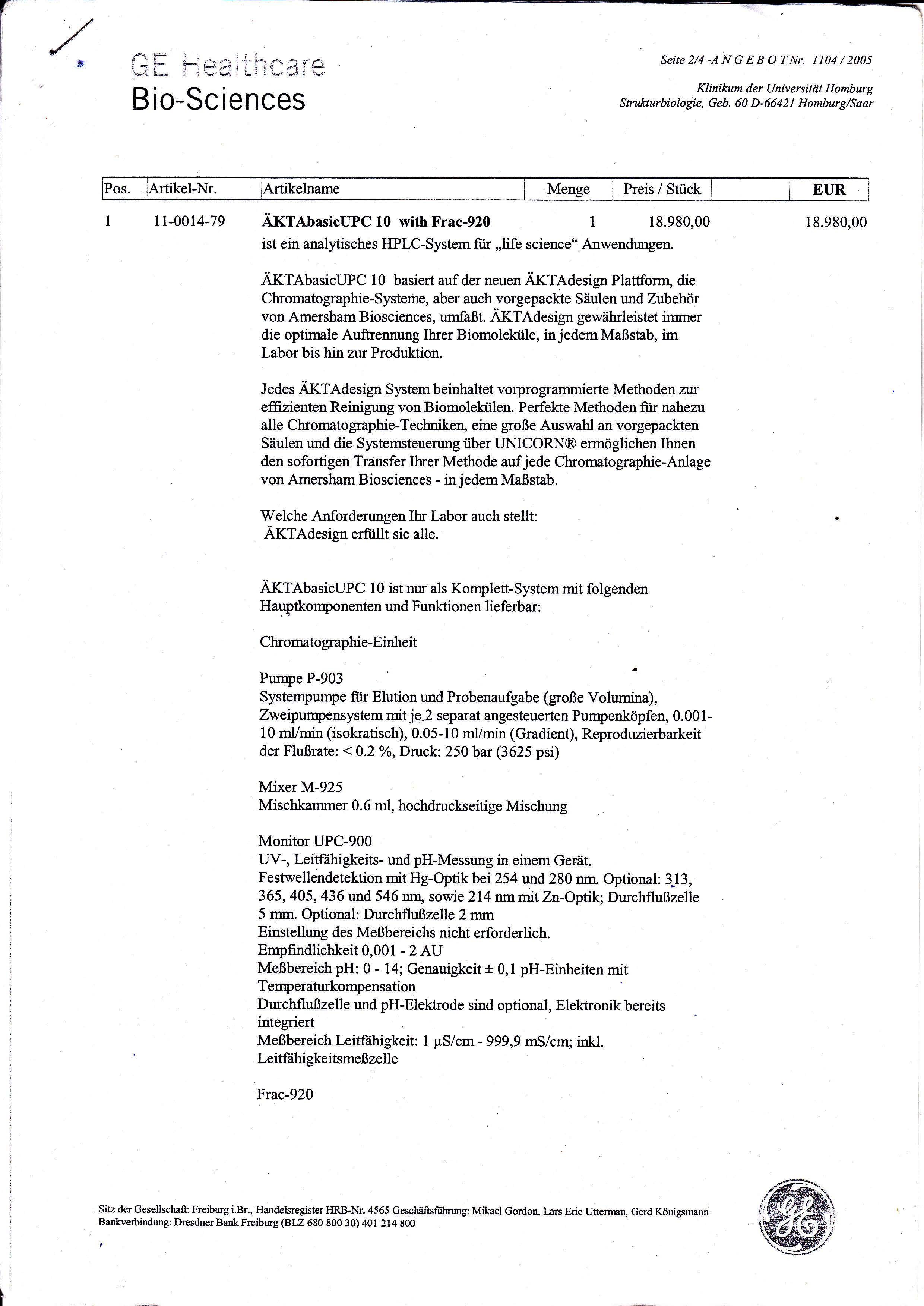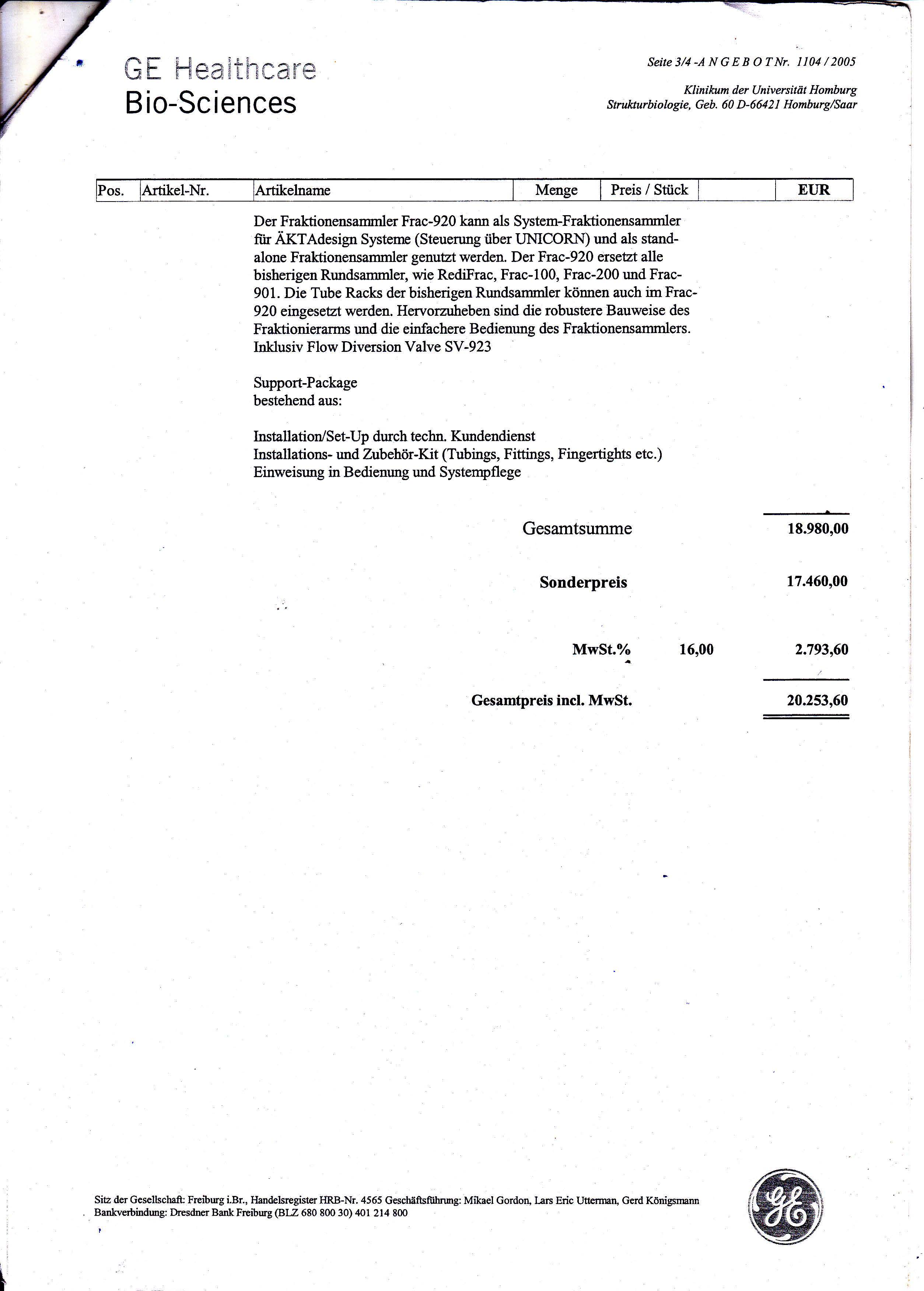The Alexander von Humboldt Foundation promotes academic cooperation between foreign and German researchers at the highest level. Each year, the Foundation awards more than 700 research fellowships and awards to support researchers from abroad who come to Germany to work on a research project together with German researchers at a host institute. The research topic is chosen by the applicant.
Reversible phosphorylation of proteins on tyrosine residues is a key event in the regulation of various cellular processes such as differentiation, cell growth, motility, apoptosis and invasion. Protein tyrosine kinases and protein tyrosine phosphatases (PTPs) are the two categories of enzymes that maintain the physiological balance between the phosphorylated and unphosphorylated state of specific tyrosine residues on signalling molecules.
Protein tyrosine phosphatase PTP-BL is the mouse homologue of human PTP-Bas/PTPLI and is the largest mammalian intracellular PTP. Despite numerous studies on PTP-BL and its human homologues, the precise molecular function of this family of PTPs remains elusive. However, current data suggest that PTP-Bas/BL are involved in the regulation of the cytoskeleton and play a central role in facilitating the assembly of various proteins.
The main aim of this project is to elucidate the 3D structures of KIND, FERM and the catalytic domain (wild-type and M2373T mutant) of PTP-BL. To this end, we will clone the corresponding cDNAs into prokaryotic expression vectors, optimise the expression of the protein constructs and find a suitable purification strategy.
1. Cloning in prokaryotic expression vectors, expression, purification and crystallization trials for the KIND domain of PTP-BL;
2. Site-directed mutagenesis to obtain the M2373T mutant in the catalytic domain of PTP-BL. Cloning in expression vectors, expression, purification and crystallization trials for this mutant and for the wild type protein;
3. Cloning in prokaryotic expression vectors, expression, purification and crystallization trialg for the FERM domain of PTP-BL
- The catalytic domain of PTP-BL was expressed, purified and crystallised. This allowed the structure of the phosphatase domain of PTP-BL to be determined. We observed evidence for partial oxidation of the active site cysteine to a sulfenic acid. To better characterise the structural consequences of this change, we prepared crystals of PTP-BL in the reduced state. We were also able to phase and begin to refine an extended form of the phosphatase domain with an additional N-terminal region.
- We obtained a model of the complex between PTP-SL kinase and Brk2 MAP. As it was not possible to obtain crystals for the complex between Erk2 and PTP-SL, an alternative approach was used to obtain a reliable model of this complex. This provided new insights into the stoichiometry, thermodynamics and interacting regions of the complex.
- Based on these studies, a structural model of the ERK2-PTP-SL complex in a state compatible with PTP-SL phosphatase activity was developed, incorporating all experimental constraints available to date. According to this model, part of the N-terminal region of PTP-SL tends to become intrinsically disordered and structured within the complex with ERK2.
- The proposed model provides the structural basis for several experimental findings, such as the complex dissociation effect of ATP or the blocking effect of PTP-SL on the export of ERK2 to the nucleus.
Published papers:
1. „Interface Analysis of the Complex between ERK2 and PTP-SL”: Balasu MC, Spiridon LN, Miron S, Craescu CT, Scheidig AJ, Petrescu AJ, Szedlacsek SE.; PLoS One. 4(5), e5432; 2009; https://pubmed.ncbi.nlm.nih.gov/19424502/
2. „Crystal structure of a xylulose 5-phosphate phosphoketolase. Insights into the substrate specificity for xylulose 5-phosphate”: Journal of Structural Biology:Scheidig, AJ; Horvath, D; Szedlacsek, SE , Volume 207, Issue 1, Page 85-102; 2019; https://pubmed.ncbi.nlm.nih.gov/31059775/
Workshop: "Techniques of protein crystallization and 3D-structure determination": (held in Busteni, Romania) between September 10-13, 2006.


